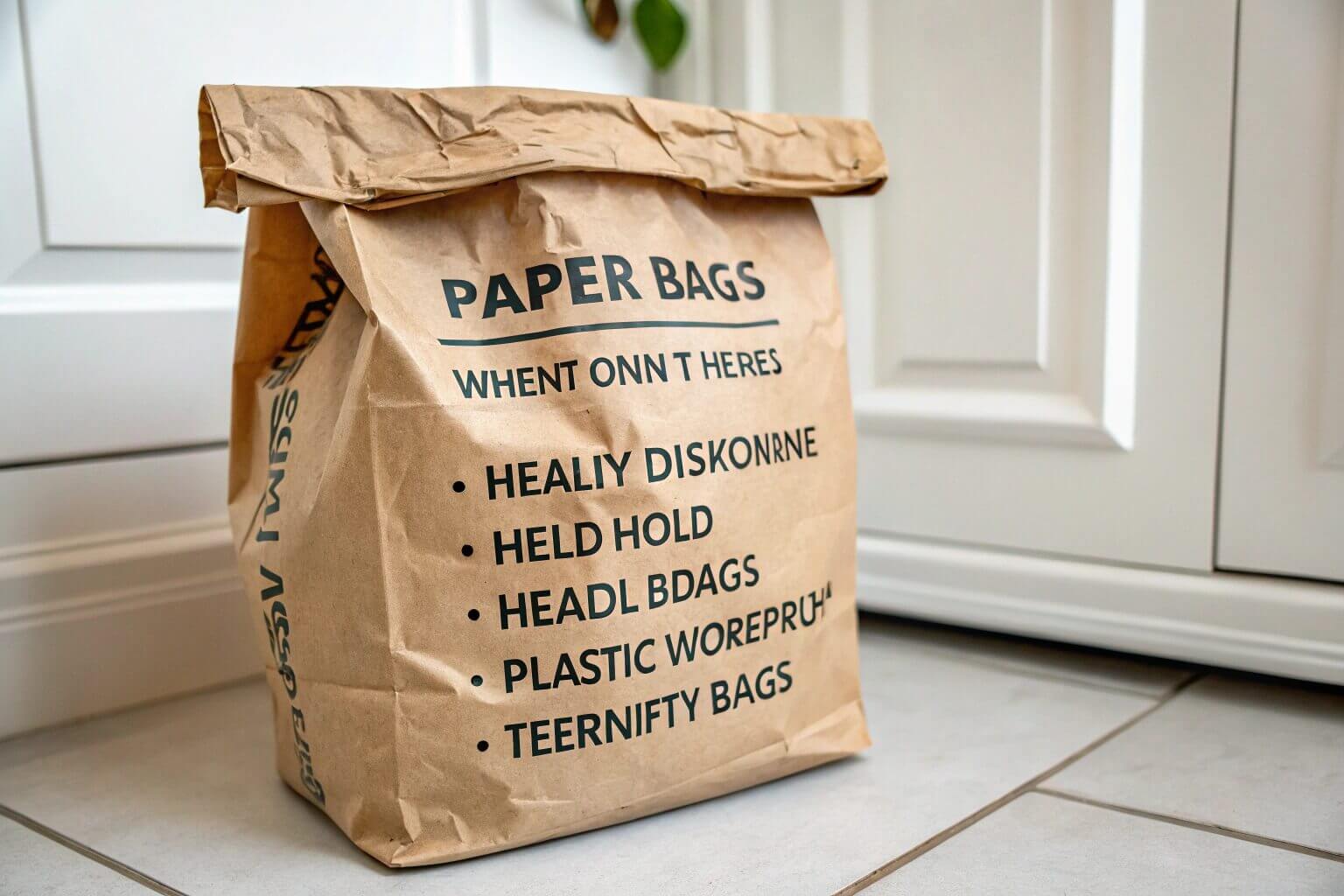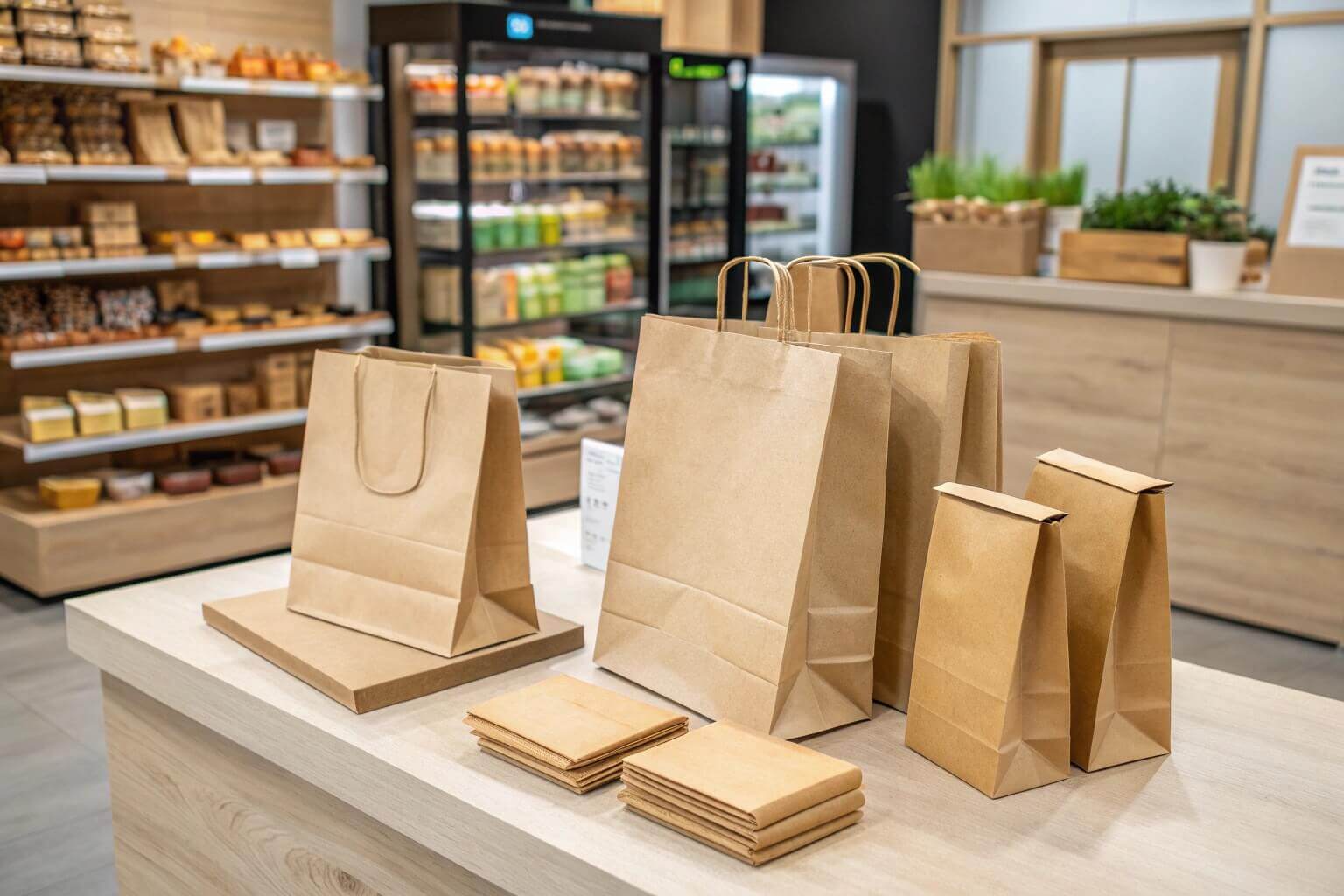At first glance, paper looks greener than plastic. It’s natural, biodegradable, and widely accepted as eco-friendly. But the reality is more complicated when you consider manufacturing, transport, and disposal.
Paper bags are better for the environment at end-of-life because they biodegrade and recycle easily. Plastic bags, however, require less energy to make and transport. The real winner depends on reuse habits.

Both paper and plastic bags have pros and cons. Let’s examine how they compare across different stages, and what this means for your business.
Why are paper bags better than plastic bags?
Many brands switch to paper to highlight sustainability. The main difference lies in how each material impacts the environment after use.
Paper bags are better because they are biodegradable, recyclable, and compostable. Unlike plastic, they break down naturally without creating microplastics or polluting oceans.

Dive deeper: Disposal comparison
- Paper: Decomposes in weeks or months. Recyclable and safe for compost.
- Plastic: Takes hundreds of years to break down. Often turns into microplastics.
- Impact on wildlife: Paper poses little long-term threat. Plastic endangers marine life.
| Bag Type | Decomposition Time | Recycling | Environmental Risk |
|---|---|---|---|
| Paper | Weeks–months | High | Low |
| Plastic | 500+ years | Low | High |
From a branding standpoint, paper also signals responsibility, aligning your business with eco-conscious customers.
What are the disadvantages of a paper bag?
While eco-friendly, paper isn’t perfect. Businesses must be aware of its drawbacks.
Paper bags require more water and energy to produce, cost more than plastic, and are weaker in wet conditions. They must be reused at least 3 times to offset production.

Dive deeper: Production & usage
- Manufacturing: Consumes ~4× more energy than plastic.
- Transportation: Heavier, increasing emissions during shipping.
- Durability: Tear easily and lose strength in rain.
| Factor | Paper Bags | Plastic Bags |
|---|---|---|
| Energy use | High | Low |
| Water use | High | Low |
| Durability | Weak in wet | Strong, reusable |
| Unit cost | Higher | Lower |
That’s why improving paper bag quality with coatings, reinforced bottoms, and strong handles is key for business use.
Are paper bags in demand?
Consumer habits and global policies are shaping packaging demand.
Yes, paper bags are in demand due to bans on plastic, eco regulations, and consumer preference for sustainable packaging. Businesses use them for both retail and food service.

Dive deeper: Market drivers
- Plastic bans: Many regions now restrict or ban single-use plastics.
- Branding value: Custom-printed bags act as walking ads.
- Consumer image: Customers view paper as eco-friendly and premium.
| Region | Market Trend |
|---|---|
| EU | Strict plastic bans; high paper demand |
| USA | State-level plastic bag bans driving paper use |
| China | Mandatory bag charges push eco adoption |
| Middle East | Growing paper bag adoption |
In my factory experience, demand for kraft bags with custom logos has surged, especially from fashion retail and food delivery sectors.
Which bag has the highest carbon footprint?
Sustainability depends not only on materials but also on reuse.
Cotton bags have the highest carbon footprint due to water and pesticide use in farming. They must be reused over 131 times to break even with a single plastic bag.

Dive deeper: Life-cycle analysis
- Plastic: Lowest footprint to produce, but high pollution risk.
- Paper: Higher footprint than plastic in production, but low in disposal.
- Cotton: Extremely high footprint; only sustainable with frequent reuse.
- Non-woven PP: Needs just 11 reuses to offset production impact.
| Bag Type | Production Impact | Reuse Threshold | Notes |
|---|---|---|---|
| Plastic | Low | 1 | Polluting, hard to recycle |
| Paper | Medium-high | 3+ | Compostable, recyclable |
| Cotton | Very high | 131+ | Stylish, durable |
| Non-woven PP | Medium | 11 | Practical, reusable |
The most sustainable option is not material alone, but how often the bag is reused and properly disposed of.
Conclusion
Paper bags beat plastic in disposal and branding value, while plastic wins in manufacturing and logistics. ✅ The greenest choice? Use whichever bag you own, reuse it often, and recycle it responsibly.

